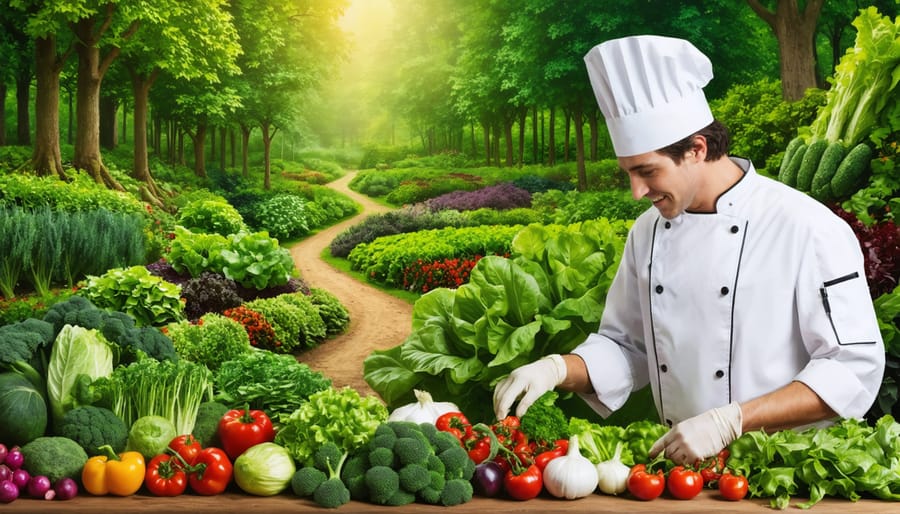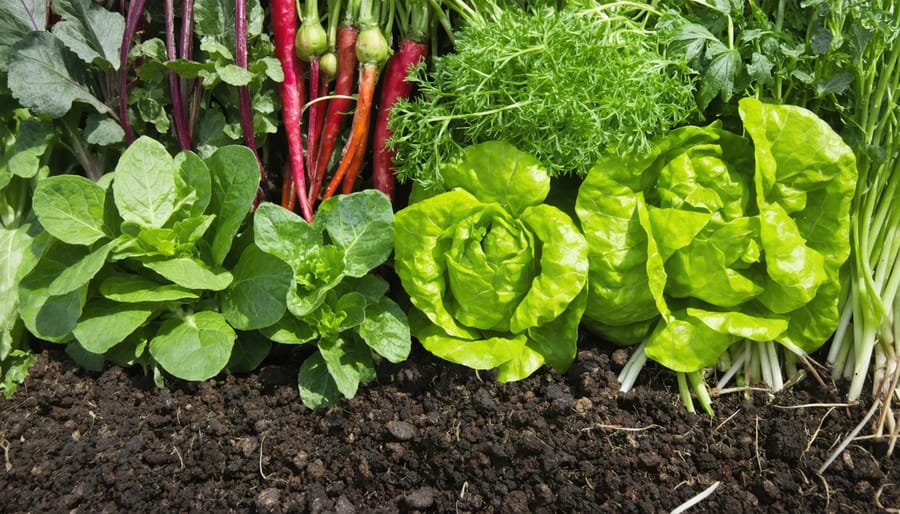
Transform your kitchen, garden, and dinner table by embracing regenerative agriculture – nature’s most intelligent system for growing nutrient-dense, flavorful food. Beyond just sustainable eating practices, regenerative methods actively rebuild soil health, enhance biodiversity, and create resilient food systems that benefit both our health and the planet’s wellbeing.
As someone who’s transformed my own backyard into a thriving food forest, I’ve witnessed firsthand how these principles elevate not just the environmental impact of our food choices, but also the depth of flavor and nutritional quality of every meal. Whether you’re a passionate home cook, a health-conscious food lover, or simply curious about where your food comes from, understanding these five fundamental principles will forever change how you think about, choose, and prepare your meals.
Let’s explore how regenerative agriculture’s core practices translate directly to better-tasting, more nourishing food on your plate, while contributing to a healthier planet for future generations.

Building Living Soil: The Foundation of Flavor
From Soil to Plate
Have you ever noticed how a tomato from your local farmer’s market tastes worlds apart from its supermarket counterpart? The secret lies in the soil. When farmers embrace regenerative practices, they’re not just helping the environment – they’re cultivating flavor that you can truly taste on your plate.
Take carrots, for instance. Those grown in healthy, mineral-rich soil develop a natural sweetness and complexity that makes them perfect for roasting or enjoying raw. These become truly nutrient-dense ingredients that elevate every dish they touch.
I recently visited a regenerative farm where the farmer handed me two identical-looking potatoes – one from conventional soil and another from their regeneratively managed fields. The difference in taste was remarkable! The regenerative potato had an earthy richness that made even a simple mashed potato dish sing with flavor.
Even herbs show the soil’s impact. Basil grown in well-maintained, living soil produces more of its aromatic oils, resulting in more vibrant pesto. It’s a beautiful reminder that when we care for our soil, it rewards us with food that’s not just better for the planet, but more delicious too.
No-Till Practices: Preserving Nature’s Recipe

Kitchen-Friendly No-Till Tips
Want to bring the magic of no-till gardening to your kitchen garden? It’s easier than you might think! Start by leaving those plant roots in the ground after harvest – they’ll break down naturally and feed your soil. Instead of digging up your beds each season, simply add a layer of compost on top and plant directly into it. I’ve found that mulching with leaves or straw keeps the soil moist and prevents weeds from taking over.
My favorite kitchen garden hack is creating layers with kitchen scraps and cardboard right on top of existing grass – no digging required! Just remember to keep the soil covered, whether with plants or mulch, to protect those precious microorganisms that make your veggies taste amazing. Trust me, once you taste tomatoes grown in healthy, undisturbed soil, you’ll never want to till again!
Cover Cropping: Nature’s Flavor Enhancer
Seasonal Menu Planning
Planning your meals around cover crop cycles isn’t just good for the soil – it’s a delicious way to maximize flavor in your dishes! As someone who’s embraced seasonal menu planning, I’ve discovered that vegetables grown after nitrogen-fixing cover crops like clover or peas tend to have an incredibly rich, sweet taste. When farmers plant grains following these crops, the resulting produce is notably more flavorful and nutrient-dense.
Try planning your spring menus around leafy greens and early vegetables that follow winter cover crops. Summer brings robust tomatoes and peppers, while fall offers hearty root vegetables and squashes. By aligning your cooking with these natural growing cycles, you’ll not only support regenerative farming practices but also enjoy ingredients at their peak flavor and nutritional value. It’s amazing how this simple shift in menu planning can transform your cooking while supporting healthier soil!
Biodiversity: The Spice of Life

Companion Planting in Your Kitchen Garden
Just like the best dinner parties bring together friends who complement each other perfectly, companion planting creates harmony in your kitchen garden. I discovered this magic when I planted basil next to my tomatoes – not only did the basil help keep pests away, but it actually made my tomatoes taste sweeter! Try growing marigolds alongside your vegetables; they’re not just pretty faces but natural pest deterrents too. Herbs like oregano and thyme make excellent neighbors for most vegetables, while nasturtiums attract pollinators and add a peppery punch to your salads. My favorite combination is growing carrots with rosemary – the aromatic herbs enhance the carrots’ natural sweetness while keeping carrot flies at bay. Remember, good neighbors in the garden mean better flavors on your plate!
As we’ve explored these five principles of regenerative agriculture, it’s clear they’re more than just farming practices – they’re a recipe for better-tasting, more nutritious food that connects us deeply with our environment. When farmers work in harmony with nature, the results show up directly on our plates through more flavorful vegetables, better-marbled meats, and herbs bursting with aromatic compounds.
I’ve personally noticed the difference in taste when cooking with ingredients from regenerative farms, and my cooking group friends often comment on how much more vibrant and flavorful these ingredients are. By supporting farmers who practice these principles, we’re not just investing in better-tasting food – we’re helping to create a more sustainable and resilient food system for future generations.
Next time you’re shopping for ingredients, consider seeking out products from regenerative farms. Ask at your local farmers’ market, look for certifications that support these practices, or even start a conversation with local producers about their farming methods. Together, we can nurture both our culinary adventures and our planet, one delicious meal at a time.



